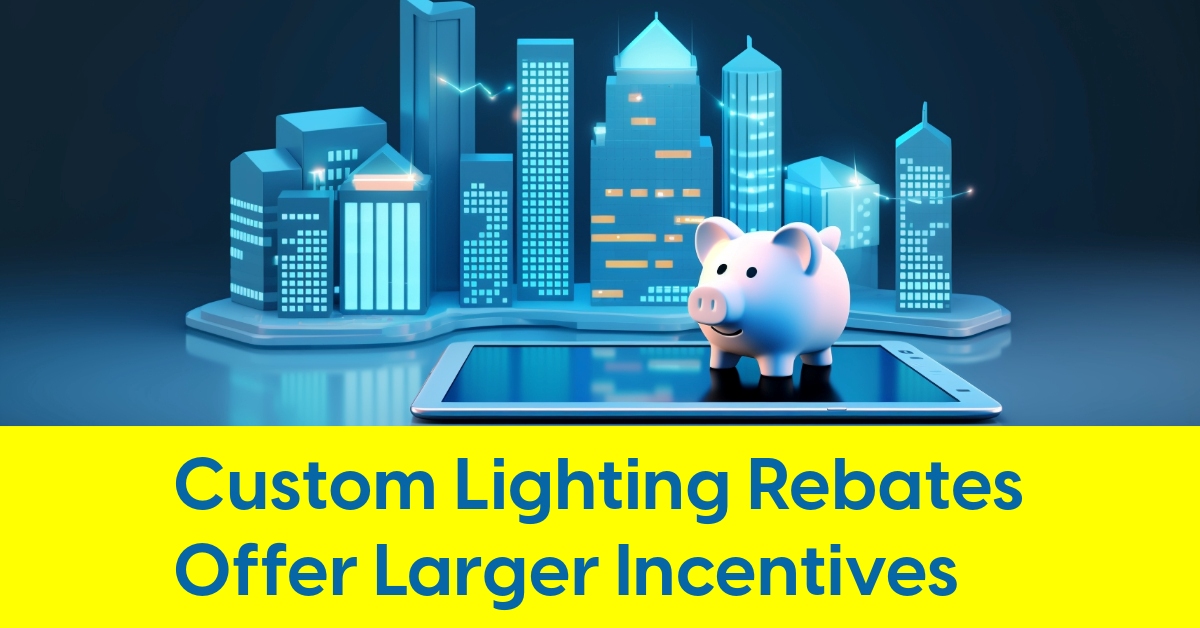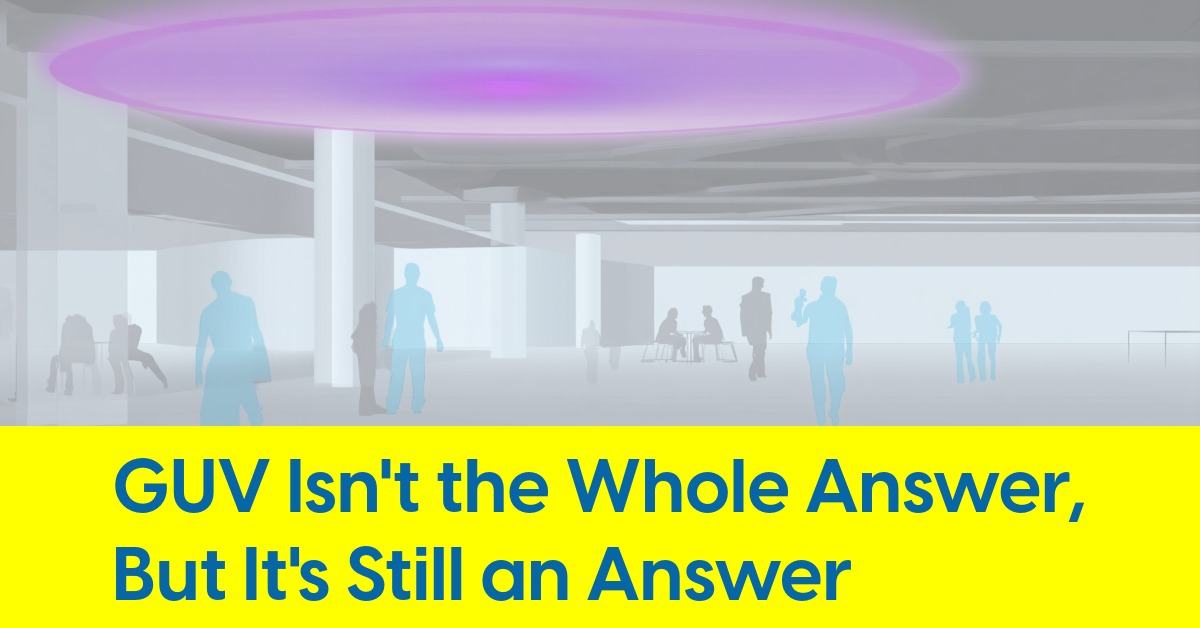May 28, 2024
Custom Lighting Rebates Offer Larger Incentives

Author: Craig DiLouie, LC, CLCP is education director for the Lighting Controls Association
Compared to prescriptive rebates, custom rebates provide higher rewards, ideal for advanced lighting controls in complex projects
While prescriptive lighting rebates have significantly promoted adoption of energy-efficient lighting and controls, the custom rebate option offers a potentially highly lucrative path, particularly in projects with advanced lighting controls.
In the large majority of the states in the U.S., utilities and energy efficiency organizations offer cash rebates to incentivize installation of energy-efficient lighting and other equipment in commercial buildings. They make these investments because demand for energy continues to grow, and promoting energy efficiency is generally less costly than building new generating capacity.
With the common prescriptive rebate, the utility awards a cash amount per qualifying installed product. With a custom incentive, the owner’s project team proposes a project to the utility, receiving an incentive based on energy savings. While not as simple as the prescriptive rebate, custom rebates can generate bigger rewards, and they are highly compatible with advanced lighting controls.
“Custom rebates could be defined as any rebate that is dependent on the calculation of an incentive based on actual savings derived from switching to the proposed equipment from installed equipment,” said Liesel Whitney-Schulte, LC, Program Director, the DesignLights Consortium (DLC). “They are typically offered for new technologies or when savings vary by end use and are hard to predict.”
From the rebate program’s perspective, custom rebates are desirable because energy savings are generally more accurate, particularly when energy savings measurement and verification is required. For the owner, custom rebates can be more rewarding financially and also offer a path to bolder, more comprehensive solutions that may also tie into the Commercial Buildings Tax Deduction and overall owner goals to minimize carbon footprint. For the lighting practitioner, they recognize outside-the-box projects and projects where the lighting is redesigned instead of replaced on a one-for-one basis.
Inside custom rebates
Custom rebates vary in type and are constantly evolving based on market conditions, making them challenging to categorize. The rebate offered by a given program will reflect the characteristics of the local region and the program goals.
“Typically, if a prescriptive rebate exists for a specific lighting project, customers will have to use that program to capture the rebates, as most programs will not let the customer choose to use a custom rebate just because the incentive will be higher,” said Leendert Jan Enthoven, President, BriteSwitch. “Where custom rebates come into play is for large projects with complex scopes of work, either involving just one technology or a variety of technologies being implemented at the same time—such as a building upgrade with HVAC upgrades, building envelope improvements, and lighting retrofits.”
Type of project: Unlike prescriptive rebates, which primarily apply to existing buildings, custom rebates may apply to new or existing construction. Given that they are more complex, applying for a custom rebate tends to be favored for larger, more-difficult projects.
In the case of a major lighting upgrade in an existing building, the custom program will likely offer a spreadsheet or form requesting an accounting of the existing lighting system. This would require an audit of lighting and control equipment, quantities, wattages, hours of operation, and current energy consumption. Similar data is presented for the proposed lighting and control system, along with a project cost. The information is used to calculate energy savings.
In the case of new construction, the energy efficiency baseline is typically based on compliance with the locally adopted commercial building energy code. The project team presents a plan—which may involve modeling and project drawings—that demonstrates a higher level of energy efficiency than the code requires. In addition to new construction, this approach may also be appropriate for existing buildings where the lighting will undergo a significant redesign, with savings based on the existing system or energy code.
Incentive: Custom lighting rebates typically award a cash amount based on electrical energy savings, which may be evaluated on a $/kW (demand) or $/kWh (energy) basis or a mix of the two. Some design-oriented programs may award the incentive based on $/kWh controlled, $/sq.ft., reduction in lighting power density compared to energy code, or a percentage of the project cost. According to BriteSwitch’s North American rebate database, the most common method is $/kWh saved, with an average of $0.05.
Technologies: Programs also vary in terms of scope of technology. Some programs specifically cover lighting, while others focus on comprehensive upgrades that may include lighting. If the program resides in a territory with significant LED lighting saturation, incentives that package multiple technologies are likely to be more commonly favored.
“Custom rebates can cover a variety of energy efficiency projects,” Enthoven said. “We’ve utilized custom rebate programs to capture everything from a comprehensive lighting redesign of a warehouse to a restaurant chain that switched to more-efficient coffeepot warmers.”
Advanced lighting controls: Advanced lighting controls are highly suited to custom rebates, as energy savings can vary widely based on application. While rebates for basic control options such as occupancy sensors and daylight dimming systems are widely available in prescriptive rebate programs, more complex lighting control solutions straddle both rebate types. Networked lighting controls, for example, are following other relatively novel technologies like horticultural LED lighting by transitioning from custom to prescriptive programs, but they are still recognized in many custom rebate programs.
“Many programs rely on custom incentives for networked lighting controls because the savings can vary so much from one building to another, and a custom incentive can capture those savings more accurately,” Whitney-Schulte explained. “NLCs can save an average of 50 percent on installed lighting—and integrating NLCs with HVAC can provide an additional 30 percent HVAC savings in large buildings—so capturing all these savings in a custom incentive is considered a safer, more accurate approach until the savings become more predictable.”
“When using advanced lighting controls or integrating lighting with other systems, custom rebates can be a valuable resource,” Enthoven added. “By using a custom program, they may be able to achieve much higher incentives than evaluating each system individually. The reporting provided by these advanced systems can make it easier to measure and quantify the savings for the rebate program as well.”
Trends in custom rebates: Enthoven said the line between prescriptive and custom is blurring. Technologies like networked lighting controls increasingly fall under prescriptive rebates, and some prescriptive rebates have begun to experiment with basing incentives on wattage saved instead of per product installed. Whitney-Schulte said the overall role of custom rebates is narrowing as LED achieves high saturation, applications become more standardized, and energy codes advance to a point where it is very difficult to exceed code efficiency minimums.
“Some programs have discontinued incentives for new construction, while others have requirements for combining multiple measures for more comprehensive approaches to the building, and some still offer prescriptive incentives for new construction,” Whitney-Schulte added.
As carbon mitigation continues to grow in importance in the future, however, custom rebates may see a resurgence as building owners seek deeper, more holistic retrofits to minimize carbon footprint.
Getting the rebate
Tapping all utility incentives requires some effort, particularly for custom incentives. Whitney-Schulte and Enthoven recommend the steps below to ensure the process goes smoothly:
-
Discover and get to know the program and its eligibility and other requirements.
-
Engage with the rebate program as early as possible.
-
Apply and gain pre-approval for rebates, which is required so that the program administrators can ensure eligibility requirements are satisfied.
-
Build time into the project to allow the rebate program to review and respond.
-
Diligently complete and provide all required paperwork and documentation.
-
Communicate any project changes to the rebate program as soon as possible, as these changes may affect the incentive and project eligibility.
-
Understand that the rebate program may require energy savings measurement and verification, which can be accomplished by metering or via an appropriate networked lighting control solution.
“It’s important for lighting practitioners to realize that custom rebates may be an option,” Enthoven said. “Some practitioners may assume the prescriptive program is the only rebate available. While that may be true for one-for-one upgrades, if a practitioner is changing the lighting plan and adding advanced controls for a project, a custom rebate may provide a larger incentive than if the practitioner used the standard prescriptive fixture rebate alone.”
The Lighting Controls Association is a council of the National Electrical Manufacturers Association that provides education about lighting control technology and application, including articles, videos, design awards, news, resources, and Education Express, a free, 24/7 series of online courses covering everything from technology to design to commissioning.










